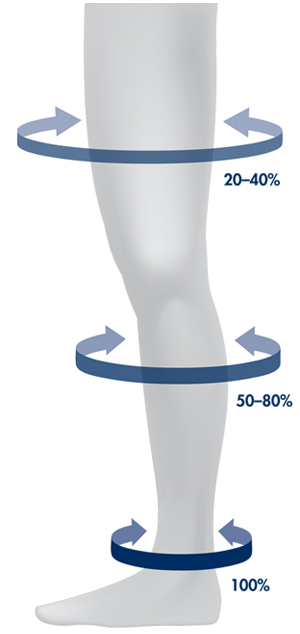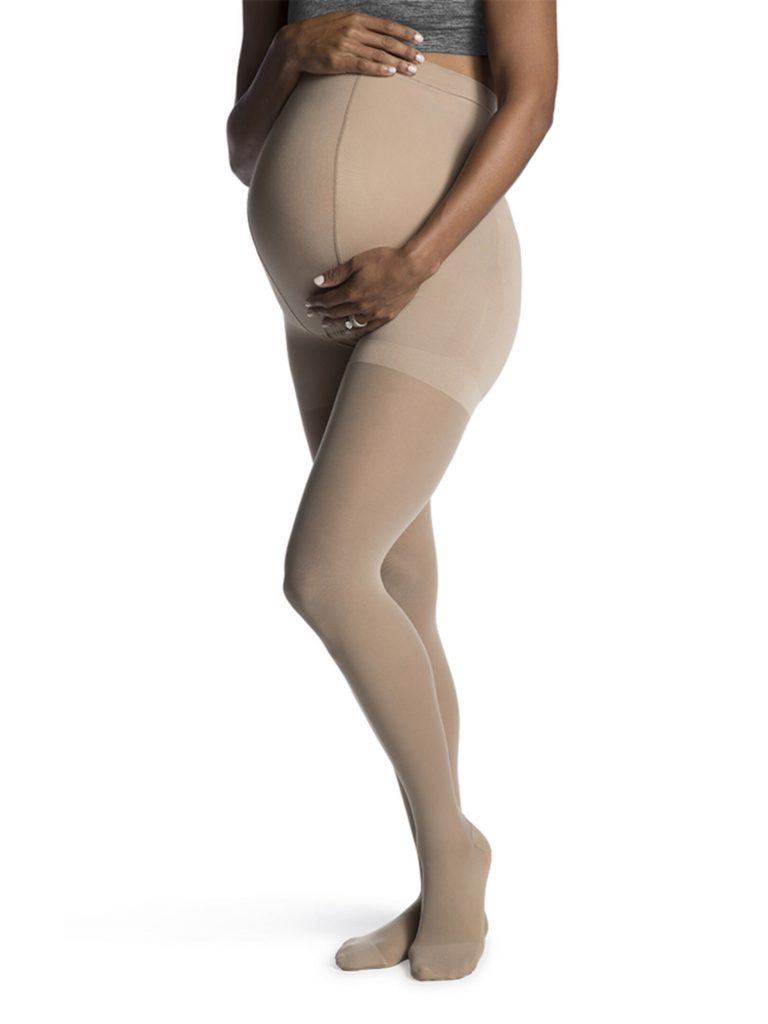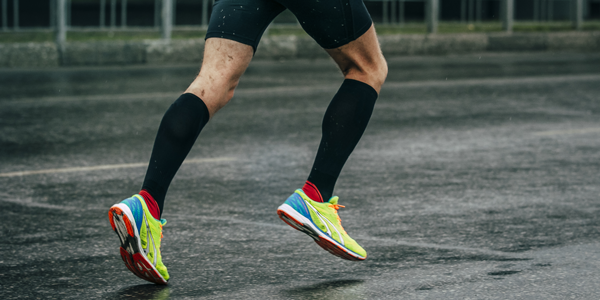What Kind of Compression Socks Do I Need?
When you think of compression socks or stockings, what do you think of? Hot, uncomfortable, and an unflattering shade of beige? Well, not anymore! With advancements in manufacturing technology, there are now endless options when it comes to compression socks or stockings.

What types of compression socks are there?
Compression socks are available in many different levels of compression.
Non-medical grade compression socks are typically classified as 8-15 or 15-20 mmHg. This indicates how tight the compression socks are. These non-medical grade compression socks are available without a doctor’s prescription and generally cost between $35-50 for a pair. They feel slightly more tight than a regular pair of well-fitted athletic socks.
Medical grade compression socks require a doctor’s prescription and have a higher level of compression – usually 20-30 mmHg or 30-40 mmHg. Higher levels of compression are available but these are less commonly used. Medical grade compression socks range in price from $95-200+ for a pair.
Compression socks are meant to be the most tight around the midfoot and ankle, and gradually decrease in tightness as the sock goes higher up the leg.
They feel significantly more tight than regular socks, and it is recommended to use donning gloves to put them on, to prevent ripping the sock and to help you get the sock on easily.
Compression socks or stockings are available in a variety of lengths and styles. The most commonly worn length is knee high, but there is also thigh high, pantyhose style, or a single leg option. Compression socks are now available in a wide variety of materials, colours, and patterns, including moisture-wicking polyester blends, cotton blends, office-appropriate business socks and pantyhose, and merino wool blends.
There are a wide variety of indications for compression socks or stockings. Different needs present an opportunity to try different compression socks to get as much comfort and benefit from the socks as you can.
Compression Socks While Travelling
Travelling usually requires sitting for long periods of time, whether you are on an airplane, or sitting in a car or other ground transportation. Staying seated for long periods of time can cause blood to pool in the feet and lower legs, even in healthy individuals. It also increases the risk of developing a thrombosis, or blood clot, in the leg veins. Wearing compression socks while travelling can help prevent this blood pooling, subsequent swelling, and risk of thrombosis. Usually, knee high socks are recommended for this, in either a non-medical grade (15-20 mmHg) or lower-level medical grade (20-30 mmHg) of compression.
Using Compression Socks While Standing At Work
If you have a job where you are on your feet for extended periods of time, compression socks can greatly benefit you by preventing lower leg blood pooling. The action of walking actually helps improve blood flow, so individuals who stand at work without doing very much walking (such as someone who works on a factory line, as a store cashier, or at an office standing desk) may experience more blood pooling in their lower legs during their shift. Compression socks can reduce this blood pooling, as well as reduce feelings of fatigue and discomfort, whether you stand or walk all day at work. There are a variety of knee high, thigh high, or pantyhose styles available to suit your needs and vocation.
Compression Socks During Pregnancy
Compression socks or stockings are widely accepted as a helpful tool during pregnancy to combat leg fatigue and swelling, as well as prevent the development of varicose veins. Pantyhose styles are popular for women who are pregnant. The abdominal section of this style has no compression whatsoever, and accommodates your growing belly as your pregnancy progresses.
Compression Socks During Running and Sports
Wearing compression socks while running or playing sports can provide valuable proprioceptive feedback and reduce muscular vibrations during impact, which prevents the feeling of fatigue during and after activity. They may also be used after running or playing sports to reduce lactic acid buildup in the lower legs and reduce the feeling of leg fatigue. Most athletic compression socks are knee high and made of a sweat/moisture wicking and antimicrobial material. They may also have a distinct panel in the calf area that allows for more expansion of the calf muscles during exercise.
Compression Socks for Advanced Medical Uses
If you have been diagnosed with an ulcer on the foot or ankle, edema, lipedema, diabetes, or lymphedema, compression stockings are very important. These stockings are usually a higher level of compression and must be fitted by someone with training in these styles.
Looking to try compression socks?
If you believe that you could benefit from wearing compression socks, book a One2One appointment to meet with a Fit Expert today.
Our One2One program will provide you with the highest level of safety and personalized service for all of your compression sock needs.







No Comments